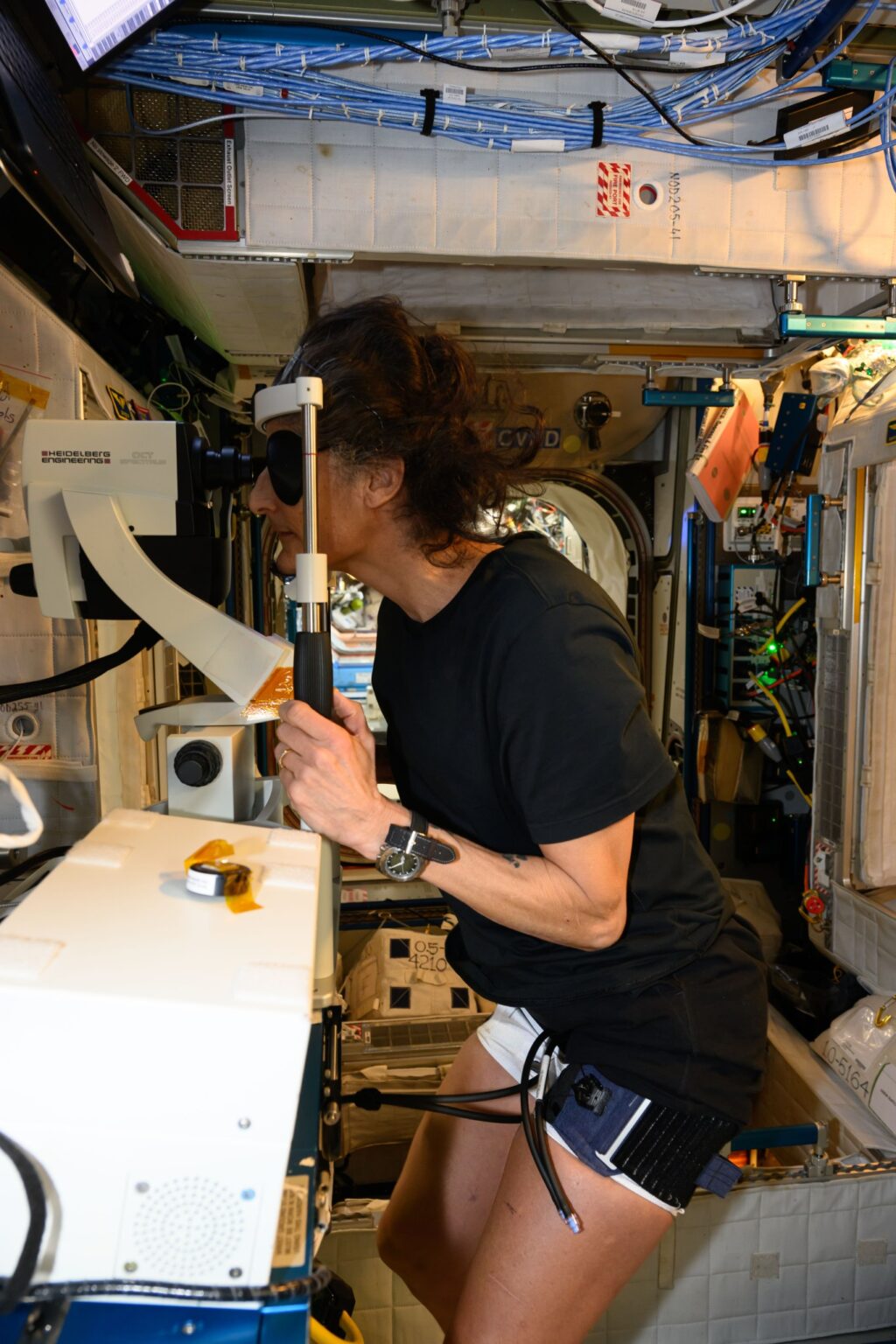
NASA astronauts are experiencing notable vision changes during extended missions aboard the International Space Station (ISS). Research indicates that many astronauts require stronger reading glasses as their missions progress. This phenomenon, known as Space-Associated Neuro-Ocular Syndrome (SANS), is characterized by symptoms such as swelling in the optic disc and flattening of the eye shape, which occurs due to the unique conditions of microgravity.
The shift of blood and cerebrospinal fluid toward the head in microgravity is suspected to be a primary factor contributing to SANS. To address this issue, the ongoing Thigh Cuff investigation aims to determine whether applying tight leg cuffs can alter fluid dynamics in the body, particularly around the eyes, heart, and blood vessels. If successful, these cuffs could serve as an effective countermeasure against fluid-related issues, enhancing astronaut safety on future missions to the Moon and Mars. Moreover, the cuffs may also benefit individuals on Earth suffering from conditions that cause fluid accumulation in the upper body.
Research into Fluid Shifts and Vision Impairment
The Fluid Shifts investigation, conducted from 2015 to 2020, was pivotal in uncovering how blood drainage from the brain changes in microgravity. Building on this, the Vision Impairment and Intracranial Pressure (VIIP) study explored the connection between fluid shifts and increased brain fluid pressure, which could be linked to SANS. Researchers employed various methods, including clinical eye exams, imaging of the retina and associated blood vessels, and noninvasive techniques to assess the thickness of retinal structures.
Approximately 300 astronauts provided valuable data through questionnaires documenting their vision changes during missions. Findings from these studies have led to a deeper understanding of SANS and proposed advancements in diagnosis methods, including the development of a head-mounted virtual reality display for noninvasive assessments. Researchers also highlighted the potential of measuring the optic nerve sheath diameter as a means to identify and quantify eye changes during spaceflight.
One notable case involved an astronaut who experienced more severe changes following a six-month mission. Researchers postulated that environmental factors, such as elevated carbon dioxide levels and B vitamin supplementation, played a role in the astronaut’s symptom improvement. While this case cannot establish a definitive cause-and-effect relationship, it raises intriguing possibilities for mitigating SANS through dietary adjustments during space missions.
Exploring Eye Tissue Changes and Genetic Factors
The SANSORI investigation, conducted by the Canadian Space Agency (CSA), utilized Optical Coherence Tomography to examine whether reduced stiffness of eye tissue contributes to SANS. Changes in tissue stiffness on Earth are often associated with aging and ocular conditions like glaucoma. The study found that long-duration spaceflight impacts the mechanical properties of eye tissues, potentially facilitating the development of SANS. This discovery could enhance understanding of both spaceflight-related eye changes and age-related ocular conditions on Earth.
Meanwhile, the MHU-8 investigation from the Japan Aerospace Exploration Agency (JAXA) studied genetic alterations in mice post-spaceflight, revealing changes in the optic nerve and retinal tissue. The researchers proposed that artificial gravity might mitigate these changes, offering a possible countermeasure for future deep-space missions.
The collective insights from these studies hold promise for preventing, diagnosing, and treating vision impairments not only in astronauts but also in the general population. As research continues, the implications for astronaut health and performance in space will remain a critical area of investigation, potentially benefiting both space exploration and terrestrial health challenges.






